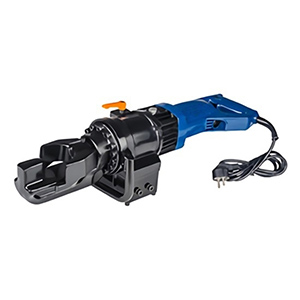Rebar Bender: Types, Structures and Working Principles
The rebar bender is an indispensable and important piece of equipment in construction engineering and steel structure engineering. It can quickly and accurately bend rebars into the required shape and is an essential tool for building steel structures. Today, ATO industrial automation will tell you about the structure and working principle of different types of rebar benders.


Worm screw reinforcing rebar bender
-
Structure
Worm screw reinforcing rebar bender is mainly composed of a frame, motor, transmission system, working mechanism (working plate, insertion seat, gripper, rotating shaft, etc.), and control system. Walking wheels are installed under the frame for easy movement. -
Working Principle
After the motor power is decelerated by a V pulley, two pairs of spur gears, and a worm gear rod, the working disk is driven to rotate. There are generally 9 shaft holes on the working plate, the center hole is used to insert the center shaft, and the surrounding 8-hole seats, each with 6 holes, are used to insert the retaining shaft. In order to move rebars conveniently, feeding rollers are also arranged at two sides of each workbench. When working, according to the bending shape of the rebar, the rebar is squared between the central axis of the working plate and the corresponding forming shaft, and the inside of the retaining shaft. When the working plate rotates, one end of the steel bar is prevented from rotating by the blocking shaft, and the position of the central shaft remains unchanged, while the forming shaft rotates around the central axis in a circular arc to push the steel bar into bending.
Due to the regulations of the specification, when it is used as a 180° bending hook, the arc bending diameter of the steel bar should not be less than 2.5 times the diameter of the steel bar. Therefore, the central axis is also correspondingly made into 9 different specifications of 16~100mm to meet the needs of bending steel bars with different diameters.
Gear-type reinforcing rebar bender
-
Structure
Gear-type reinforcing rebar bender is mainly composed of a frame, motor, gear reducer, working mechanism, and electrical control system. It changes the traditional worm gear transmission and adds an angle automatic control mechanism and braking device. -
Working Principle
The gear-type rebar bending machine is powered by an electric motor with a brake, which drives the working plate to rotate. The left and right inserts of the working mechanism can be infinitely adjusted by the hand wheel and bent and formed with different specifications of steel bars. The angle control is achieved by the cooperation of the angle pre-selection mechanism and several limit pins of different lengths. When the rebar is bent to a pre-selected angle, the limit pin touches the stroke switch, so that the motor stops and reverses, returns to its original position, and completes the rebar bending process. In addition, the electrical control system also has the characteristics of jogging, automatic state, two-way control, instantaneous braking, accident emergency stop system short circuit protection, motor overheating protection, and so on.
Rebar stirrup bender
-
Structure
A rebar stirrup bender is a special machine suitable for bending stirrups, the bending angle can be adjusted arbitrarily, and its structure is similar to that of a rebar bender. -
Working Principle
The motor power is reduced by a pair of pulleys and two teams of spur gears to rotate the eccentric disc. The eccentric disc drives two connecting rods through the eccentric hinge, and each connecting rod is hinged with a rack, so the rack reciprocates along the slide. The rack drives the gear to make the working plate reciprocate within a certain angle. There are two shaft holes on the working plate, the center hole is inserted into the center shaft, and the other jack is in a row shaft. When the working plate rotates, the central shaft and the forming shaft rotate with it, which can bend the steel bar into the required stirrup on the same principle as the rebar bender.
Hydraulic rebar cutting and bending machine
A hydraulic rebar cutting and bending machine is a dual-purpose machine that uses hydraulic technology to cut and bend steel bars, with a high degree of automation and easy operation.
-
Structure
The hydraulic rebar cutting and bending machine mainly consist of a hydraulic transmission system, cutting mechanism, stubborn mechanism, engine, body, and so on. -
Working Principle
It is driven by an electric motor with two sets of plunger hydraulic pumps, and one group pushes the piston for cut-off; the other group drives the rotary hydraulic cylinder to drive the bending working plate to rotate. -
How the cut-off mechanism works
The middle of the cut-off piston is equipped with a central valve column and spring, when idling, due to the action of the spring, the center valve column leaves the middle oil hole of the hydraulic cylinder, and the high-pressure oil also flows back to the oil tank through the eccentric shaft channel. When cutting off, a human force pushes the piston, so that the center valve column blocks the center hole of the hydraulic cylinder, at this time, the high-pressure oil from the plunger pump enters the hydraulic cylinder through the oil valve, generating high pressure to push the piston movement, and the piston drives the cutter to cut the ribs. At this time, the reverse thrust of the pressure spring is greater than the pressure in the hydraulic cylinder, the valve column will return to its original position, and the hydraulic oil will flow back to the oil tank along the oil circuit of the central oil hole. The return stroke of the cut-off piston is achieved by the rebound force of the leaf spring.
The above is the structure of different types of rebar benders and their working principles. ATO hopes it will be helpful to you. For more information about mechanical equipment, you can continue to pay attention to our website news.

